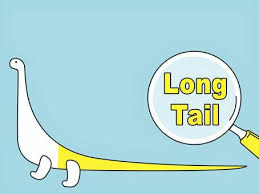I am summarizing government-released statistical information. If you would like more detailed information, please visit the government statistics portal (e-Stat) or refer to the statistical data published by various government ministries and agencies.
Percentage of People Feeling Loneliness Based on Marital Status
Unmarried Individuals:
Unmarried individuals have a relatively high “always” factor in their lives, scoring 12.5. They may feel a sense of stability and freedom, perhaps because they do not have the responsibilities or constraints of marriage. On the other hand, the “sometimes” factor is also high, at 49.6 points. This indicates that unmarried people can occasionally feel lonely or anxious while having free time.
Married Individuals:
Married individuals have a low “always” factor, scoring 4.9 points. Marriage brings stability and shared responsibilities but can sometimes limit personal freedom. However, the “sometimes” factor is 39.3 points, suggesting that married individuals do experience moments of support and empathy in their relationships.
Widowed Individuals:
Widowed individuals have a relatively low “always” factor, scoring 5.6 points. The experience of losing a spouse may lead to a decreased sense of stability. On the other hand, the “sometimes” factor is 35.0 points, indicating the importance of support and memories in their lives.
Divorced Individuals:
Divorced individuals score 11.8 points for the “always” factor, possibly due to changes brought about by divorce and the prospects of starting a new life. The “sometimes” factor is also 44.6 points, suggesting that they may feel both joy and anxiety through new encounters and the opportunity for a fresh start.
Please note that these findings provide insights into how marital status may influence feelings of loneliness and the variations within different life situations.
| 10~12 points (always there) | 7~9 points (sometimes) | 4~6 points (almost) | 3 points (never) | Answer | |
|---|---|---|---|---|---|
| Full | 7.1 | 41.6 | 37.0 | 13.5 | 0.9 |
| unmarried | 12.5 | 49.6 | 26.8 | 10.3 | 0.8 |
| Married | 4.9 | 39.3 | 40.5 | 14.5 | 0.8 |
| bereavement | 5.6 | 35.0 | 41.6 | 15.9 | 1.9 |
| divorce | 11.8 | 44.6 | 32.1 | 11.0 | 0.5 |
Loneliness Scores Based on Marital Status
Unmarried Individuals: Unmarried individuals score 9.7% for the “always” factor, indicating that they might feel a relatively high level of freedom and stability in their lifestyle. On the other hand, the “sometimes” factor is also somewhat high, at 23.0%, suggesting that they occasionally experience feelings of loneliness and anxiety.
Married Individuals: Married individuals score 3.0% for the “always” factor, possibly indicating that they feel the responsibilities and constraints associated with marriage. However, the “sometimes” factor is somewhat lower at 12.4%, suggesting that they do experience moments of support and empathy in their marriage.
Widowed Individuals: Widowed individuals score 3.1% for the “always” factor, which may be influenced by the impact of their loss. On the other hand, the “sometimes” factor is somewhat higher at 17.7%, indicating that they have moments of joy through the support of those around them and cherished memories.
Divorced Individuals: Divorced individuals score 8.8% for the “always” factor, which is relatively high, suggesting that they may feel a sense of anticipation for a new life and self-discovery. The “sometimes” factor is somewhat higher at 21.8%, indicating that they experience both joy and anxiety through new encounters and opportunities for a fresh start.
These findings provide insights into how different marital statuses can affect individuals’ experiences of loneliness, with variations in feelings of “always” and “sometimes” loneliness among different groups.
| Often and always | Sometimes there are | Sometimes | Hardly any | Never | Answer | |
|---|---|---|---|---|---|---|
| Full | 4.9 | 15.8 | 19.6 | 40.6 | 18.4 | 0.6 |
| unmarried | 9.7 | 23.0 | 23.3 | 29.2 | 14.7 | 0.2 |
| Married | 3.0 | 12.4 | 17.4 | 46.0 | 20.6 | 0.6 |
| bereavement | 3.1 | 17.7 | 22.2 | 39.0 | 16.5 | 1.6 |
| divorce | 8.8 | 21.8 | 24.8 | 30.9 | 13.4 | 0.3 |
Percentage Feeling Loneliness Based on Gender and Marital Status

Different factors are observed based on gender and marital status. Here’s the English translation of the information:
For Unmarried Individuals:
- Between unmarried men and women, the “always” factor is similar, with 10.0% for men and 9.1% for women, suggesting a sense of freedom and stability in their lives.
- The “sometimes” factor is slightly higher, at 22.0% for men and 24.1% for women, indicating that unmarried individuals can occasionally feel loneliness or anxiety.
For Married Individuals:
- Among both married men and women, the “always” factor is low, at 2.9% for men and 3.0% for women, suggesting they may feel the responsibilities and constraints of marriage.
- The “sometimes” factor is slightly lower, at 12.1% for men and 12.5% for women, implying that they experience moments of support and empathy due to marriage.
For Widowed Individuals:
- Both widowed men and women have a low “always” factor, with 3.2% for men and 3.0% for women, indicating they may still feel the impact of their loss.
- The “sometimes” factor is somewhat higher, at 23.4% for men and 16.6% for women, showing that they find moments of joy through the support of others and their memories.
For Divorced Individuals:
- Divorced men and women have a somewhat higher “always” factor, with 10.7% for men and 7.7% for women, suggesting they may feel the prospect of a new life and self-discovery.
- The “sometimes” factor is relatively higher, at 26.4% for men and 19.5% for women, indicating that they experience joy and anxiety through new encounters and opportunities for a fresh start.
| Often and always | Sometimes there are | Sometimes | Hardly any | Never | Answer | |
|---|---|---|---|---|---|---|
| Male/Unmarried | 10.0 | 22.0 | 23.2 | 29.7 | 14.8 | 0.3 |
| Male/Married | 2.9 | 12.1 | 16.4 | 47.0 | 20.8 | 0.7 |
| Male/Widowed | 3.2 | 23.4 | 24.1 | 32.9 | 13.9 | 2.5 |
| Male/Separated | 10.7 | 26.4 | 24.9 | 26.1 | 11.9 | – |
| Often and always | Sometimes there are | Sometimes | Hardly any | Never | Answer | |
|---|---|---|---|---|---|---|
| Female/Unmarried | 9.1 | 24.1 | 23.3 | 28.7 | 14.7 | 0.1 |
| Female/Married | 3.0 | 12.5 | 18.4 | 45.2 | 20.4 | 0.6 |
| Female/Widowed | 3.0 | 16.6 | 21.9 | 40.2 | 17.1 | 1.2 |
| Female/Separated | 7.7 | 19.5 | 24.5 | 33.9 | 13.9 | 0.4 |
The percentage of individuals with a loneliness score
The highest percentage of individuals with a loneliness score of “10-12 points (always)” varies based on gender and marital status, with the following findings:
- Among men, the highest percentage in this category is observed among those who are “divorced” at 16.5%.
- For women, the highest percentage in this category is among those who are “unmarried” at 11.5%.
| 10~12 points (always there) | 7~9 points (sometimes) | 4~6 points (almost) | 3 points (never) | Answer | |
|---|---|---|---|---|---|
| Male/Unmarried | 13.2 | 51.2 | 24.3 | 10.3 | 0.9 |
| Male/Married | 5.1 | 39.3 | 40.6 | 14.5 | 0.6 |
| Male/Widowed | 8.9 | 39.2 | 34.2 | 15.8 | 1.9 |
| Male/Separated | 16.5 | 47.1 | 25.7 | 10.7 | – |
| 10~12 points (always there) | 7~9 points (sometimes) | 4~6 points (almost) | 3 points (never) | Answer | |
|---|---|---|---|---|---|
| Female/Unmarried | 11.5 | 48.2 | 29.2 | 10.4 | 0.7 |
| Female/Married | 4.6 | 39.2 | 40.7 | 14.6 | 1.0 |
| Female/Widowed | 4.8 | 34.1 | 43.3 | 16.0 | 1.8 |
| Female/Separated | 9.1 | 43.2 | 35.6 | 11.2 | 0.8 |
Percentage of people who feel lonely by household composition
The percentage of people who answered “often or always” to experiencing loneliness is highest among “single-person households,” at 9.5%.
Loneliness Scores by Household Composition
The percentage of people with a loneliness score of “10-12 points (always)” is highest among “single-person households,” at 12.0%.
Age Group and Co-resident Status Loneliness Percentage
By Household Composition:
- Single-person households exhibit a moderate level of the “always” element at 9.5%, potentially suggesting that they feel independence and satisfaction. However, the “sometimes” element is slightly higher at 22.1%, indicating that they occasionally feel loneliness or anxiety.
- Single-generation households have a low “always” element at 3.3%, possibly indicating they are influenced by family or generational ties. The “sometimes” element is also slightly lower at 11.8%, suggesting that they have moments of support and empathy.
- Two-generation households, whether parents and children or single parents and children, have low “always” elements (3.9% and 6.5%, respectively), but their “sometimes” elements are slightly higher (15.1% and 21.1%, respectively). This indicates that they experience the influence and support of family moments.
- Three-generation households show a low “always” element at 3.8%, suggesting that they feel the impact of multiple generations. Their “sometimes” element is also slightly lower at 14.0%, indicating a sense of family bonds.
- Other households exhibit a slightly lower “always” element at 5.2%, but their “sometimes” element is somewhat higher at 16.1%, suggesting that they experience moments of various influences.
By Age Group:
- There are observed trends in loneliness by household composition within different age groups. Generally, the “always” element tends to be slightly lower for older individuals, while the “sometimes” element is somewhat higher for younger age groups.
| Often and always | Sometimes there are | Sometimes | Hardly any | Never | Answer | |
|---|---|---|---|---|---|---|
| Single-person household | 9.5 | 22.1 | 25.1 | 30.4 | 12.0 | 1.0 |
| One-generation households | 3.3 | 11.8 | 16.3 | 46.9 | 21.0 | 0.8 |
| Two-generation households (parents and children) | 3.9 | 15.1 | 19.6 | 41.4 | 19.6 | 0.3 |
| Two-generation households (single parents and children) | 6.5 | 21.1 | 22.1 | 34.5 | 15.5 | 0.4 |
| Three-generation household | 3.8 | 14.0 | 18.1 | 41.5 | 22.3 | 0.2 |
| Other households | 5.2 | 16.1 | 19.6 | 40.7 | 17.9 | 0.6 |
| 16~19 years old / Single household | 21.1 | 21.1 | 5.3 | 21.1 | 31.6 | – |
| 16~19 years old / <> generation household | 40.0 | – | 20.0 | 20.0 | 20.0 | – |
| 16~19 years old / <> generation household (parents and children) | 3.8 | 15.9 | 15.9 | 35.6 | 28.8 | – |
| 16~19 years old / Two-generation household (single parent and child) | 5.9 | 23.5 | 17.6 | 23.5 | 29.4 | – |
| 16~19 years old / <> generation household | 2.3 | 18.2 | 18.2 | 36.4 | 25.0 | – |
| 16~19 years old/other households | – | 23.1 | 7.7 | 38.5 | 30.8 | – |
| 20~29 years old / Single household | 7.7 | 16.8 | 27.3 | 33.6 | 14.5 | – |
| 20~29 years old / <> generation household | 6.6 | 14.8 | 16.4 | 35.2 | 27.0 | – |
| 20~29 years old / <> generation household (parents and children) | 5.1 | 21.2 | 19.2 | 30.8 | 23.7 | – |
| 20~29 years old / Two-generation household (single parent and child) | 11.8 | 29.4 | 17.6 | 23.5 | 17.6 | – |
| 20~29 years old / <> generation household | 11.9 | 20.2 | 21.4 | 27.4 | 19.0 | – |
| 20~29 years old/other households | 5.0 | 20.0 | 20.0 | 32.5 | 22.5 | – |
| 30~39 years old / Single household | 15.6 | 28.1 | 24.1 | 23.6 | 8.5 | – |
| 30~39 years old / <> generation household | 5.5 | 15.9 | 15.9 | 37.7 | 24.5 | 0.5 |
| 30~39 years old / <> generation household (parents and children) | 4.0 | 16.3 | 20.3 | 38.8 | 20.6 | – |
| 30~39 years old / Two-generation household (single parent and child) | 13.8 | 27.7 | 17.0 | 28.7 | 12.8 | – |
| 30~39 years old / <> generation household | 7.7 | 16.9 | 15.4 | 30.8 | 29.2 | – |
| 30~39 years old/other households | 9.1 | 22.7 | 15.9 | 36.4 | 15.9 | – |
| 40~49 years old / Single household | 11.0 | 26.9 | 28.0 | 24.2 | 9.9 | – |
| 40~49 years old / <> generation household | 6.5 | 15.9 | 16.3 | 46.1 | 14.7 | 0.4 |
| 40~49 years old / <> generation household (parents and children) | 3.8 | 15.3 | 20.3 | 41.3 | 19.2 | 0.1 |
| 40~49 years old / Two-generation household (single parent and child) | 10.9 | 26.4 | 23.6 | 24.1 | 14.9 | – |
| 40~49 years old / <> generation household | 5.4 | 16.3 | 20.9 | 38.0 | 19.4 | – |
| 40~49 years old/other households | 7.4 | 11.1 | 14.8 | 44.4 | 22.2 | – |
| 50~59 years old / Single household | 12.8 | 26.4 | 26.4 | 24.5 | 9.8 | – |
| 50~59 years old / <> generation household | 4.6 | 15.0 | 18.0 | 43.9 | 18.5 | – |
| 50~59 years old / <> generation household (parents and children) | 4.9 | 15.9 | 21.8 | 40.5 | 16.5 | 0.3 |
| 50~59 years old / Two-generation household (single parent and child) | 7.8 | 21.7 | 26.1 | 32.6 | 11.7 | – |
| 50~59 years old / <> generation household | 2.7 | 11.5 | 22.1 | 45.1 | 18.6 | – |
| 50~59 years old/other households | 6.8 | 15.5 | 26.2 | 39.8 | 10.7 | 1.0 |
| 60~69 years old / Single household | 8.7 | 21.7 | 25.9 | 32.5 | 10.5 | 0.7 |
| 60~69 years old / <> generation household | 2.7 | 11.3 | 17.6 | 48.6 | 19.6 | 0.1 |
| 60~69 years old / <> generation household (parents and children) | 2.4 | 10.9 | 20.2 | 47.7 | 18.5 | 0.2 |
| 60~69 years old / Two-generation household (single parent and child) | 4.6 | 17.8 | 23.4 | 41.6 | 12.7 | – |
| 60~69 years old / <> generation household | 0.8 | 14.3 | 13.4 | 43.7 | 27.7 | – |
| 60~69 years old/other households | 6.6 | 18.2 | 19.0 | 36.4 | 19.8 | – |
| 70~79 years old / Single household | 7.3 | 19.0 | 24.6 | 32.8 | 14.6 | 1.7 |
| 70~79 years old / <> generation household | 1.7 | 8.6 | 14.3 | 50.4 | 23.1 | 1.9 |
| 70~79 years old / <> generation household (parents and children) | 2.8 | 9.4 | 16.2 | 52.1 | 18.5 | 0.9 |
| 70~79 years old / Two-generation household (single parent and child) | 1.3 | 13.9 | 22.8 | 41.1 | 19.0 | 1.9 |
| 70~79 years old / <> generation household | 1.8 | 6.6 | 18.7 | 51.8 | 20.5 | 0.6 |
| 70~79 years old/other households | 1.1 | 13.5 | 21.3 | 48.3 | 15.7 | – |
| Over 80 years old / Single-person household | 4.6 | 19.2 | 21.9 | 38.1 | 12.7 | 3.5 |
| Over 80 years old / one-generation household | 1.8 | 10.9 | 16.7 | 48.1 | 21.3 | 1.3 |
| Over 80 years old / Two-generation household (parents and children) | 2.0 | 14.8 | 14.1 | 48.3 | 16.8 | 4.0 |
| 80 years old or older/Two-generation household (single parent and child) | 0.7 | 17.2 | 17.9 | 44.1 | 19.3 | 0.7 |
| Over 80 years old / Three-generation household | 1.1 | 17.4 | 13.0 | 43.5 | 23.9 | 1.1 |
| Over 80 years old / Other households | 1.8 | 12.3 | 15.8 | 45.6 | 21.1 | 3.5 |
The loneliness score by age group and the presence or absence of cohabitants
The percentage of people with a loneliness score of “10-12 points (always)” differs based on co-resident status. It’s 6.3% for those with co-residents and 11.7% for those without.
When examining age groups and co-resident status, the age group with the highest percentage of individuals scoring “10-12 points (always)” on the loneliness scale is the “30s with no co-residents,” reaching 17.3%. Conversely, the lowest percentage can be observed among the “80 and older with co-residents,” at 3.1%.
| 10~12 points (always there) | 7~9 points (sometimes) | 4~6 points (almost) | 3 points (never) | Answer | |
|---|---|---|---|---|---|
| Single-person household | 12.0 | 45.3 | 30.9 | 10.5 | 1.3 |
| One-generation households | 4.9 | 37.6 | 40.8 | 15.9 | 0.8 |
| Two-generation households (parents and children) | 6.4 | 43.8 | 36.9 | 12.2 | 0.8 |
| Two-generation households (single parents and children) | 10.4 | 42.3 | 33.3 | 13.3 | 0.8 |
| Three-generation household | 5.0 | 38.2 | 40.0 | 16.3 | 0.5 |
| Other households | 6.0 | 42.8 | 36.5 | 14.0 | 0.8 |
| 16~19 years old / Single household | 15.8 | 31.6 | 21.1 | 31.6 | – |
| 16~19 years old / <> generation household | 40.0 | – | 40.0 | 20.0 | – |
| 16~19 years old / <> generation household (parents and children) | 4.3 | 37.5 | 37.5 | 20.2 | 0.5 |
| 16~19 years old / Two-generation household (single parent and child) | 5.9 | 55.9 | 17.6 | 20.6 | – |
| 16~19 years old / <> generation household | 4.5 | 38.6 | 36.4 | 20.5 | – |
| 16~19 years old/other households | – | 46.2 | 30.8 | 23.1 | – |
| 20~29 years old / Single household | 8.2 | 45.9 | 38.2 | 7.7 | – |
| 20~29 years old / <> generation household | 8.2 | 38.5 | 38.5 | 14.8 | – |
| 20~29 years old / <> generation household (parents and children) | 10.2 | 44.6 | 30.5 | 14.4 | 0.3 |
| 20~29 years old / Two-generation household (single parent and child) | 19.1 | 39.7 | 26.5 | 14.7 | – |
| 20~29 years old / <> generation household | 13.1 | 38.1 | 34.5 | 14.3 | – |
| 20~29 years old/other households | 5.0 | 35.0 | 42.5 | 17.5 | – |
| 30~39 years old / Single household | 17.1 | 55.8 | 21.6 | 5.5 | – |
| 30~39 years old / <> generation household | 8.2 | 44.1 | 33.6 | 13.2 | 0.9 |
| 30~39 years old / <> generation household (parents and children) | 7.3 | 47.7 | 33.3 | 11.4 | 0.3 |
| 30~39 years old / Two-generation household (single parent and child) | 14.9 | 50.0 | 19.1 | 13.8 | 2.1 |
| 30~39 years old / <> generation household | 7.7 | 46.2 | 30.8 | 15.4 | – |
| 30~39 years old/other households | 13.6 | 47.7 | 29.5 | 9.1 | – |
| 40~49 years old / Single household | 17.0 | 55.5 | 20.3 | 7.1 | – |
| 40~49 years old / <> generation household | 7.8 | 43.3 | 38.4 | 10.6 | – |
| 40~49 years old / <> generation household (parents and children) | 6.1 | 47.9 | 33.4 | 12.0 | 0.6 |
| 40~49 years old / Two-generation household (single parent and child) | 18.4 | 46.6 | 25.9 | 9.2 | – |
| 40~49 years old / <> generation household | 3.9 | 51.9 | 27.1 | 17.1 | – |
| 40~49 years old/other households | 9.3 | 44.4 | 22.2 | 24.1 | – |
| 50~59 years old / Single household | 15.5 | 50.2 | 24.9 | 8.7 | 0.8 |
| 50~59 years old / <> generation household | 7.4 | 43.5 | 32.4 | 16.7 | – |
| 50~59 years old / <> generation household (parents and children) | 7.0 | 46.2 | 35.2 | 11.1 | 0.5 |
| 50~59 years old / Two-generation household (single parent and child) | 10.4 | 48.3 | 30.0 | 10.9 | 0.4 |
| 50~59 years old / <> generation household | 3.5 | 38.9 | 45.1 | 12.4 | – |
| 50~59 years old/other households | 6.8 | 50.5 | 36.9 | 5.8 | – |
| 60~69 years old / Single household | 13.3 | 44.8 | 33.2 | 8.4 | 0.3 |
| 60~69 years old / <> generation household | 3.9 | 37.9 | 42.8 | 15.3 | 0.1 |
| 60~69 years old / <> generation household (parents and children) | 2.9 | 38.0 | 48.7 | 9.7 | 0.7 |
| 60~69 years old / Two-generation household (single parent and child) | 8.1 | 38.1 | 38.6 | 14.7 | 0.5 |
| 60~69 years old / <> generation household | 3.4 | 34.5 | 43.7 | 18.5 | – |
| 60~69 years old/other households | 5.8 | 42.1 | 38.0 | 13.2 | 0.8 |
| 70~79 years old / Single household | 8.7 | 40.3 | 34.2 | 14.6 | 2.2 |
| 70~79 years old / <> generation household | 3.1 | 32.4 | 44.8 | 18.0 | 1.7 |
| 70~79 years old / <> generation household (parents and children) | 6.0 | 36.5 | 44.4 | 12.3 | 0.9 |
| 70~79 years old / Two-generation household (single parent and child) | 5.1 | 33.5 | 42.4 | 17.1 | 1.9 |
| 70~79 years old / <> generation household | 5.4 | 25.9 | 50.6 | 17.5 | 0.6 |
| 70~79 years old/other households | 3.4 | 37.1 | 40.4 | 18.0 | 1.1 |
| Over 80 years old / Single-person household | 7.3 | 33.1 | 39.2 | 15.8 | 4.6 |
| Over 80 years old / one-generation household | 2.8 | 35.9 | 43.5 | 15.9 | 1.8 |
| Over 80 years old / Two-generation household (parents and children) | 5.4 | 30.2 | 46.3 | 12.1 | 6.0 |
| 80 years old or older/Two-generation household (single parent and child) | 3.4 | 35.9 | 46.2 | 13.1 | 1.4 |
| Over 80 years old / Three-generation household | 1.1 | 39.1 | 41.3 | 15.2 | 3.3 |
| Over 80 years old / Other households | 1.8 | 38.6 | 42.1 | 14.0 | 3.5 |
Percentage of Individuals Feeling Loneliness by Gender and Living Arrangement
By Living Arrangement:
When living with others, the percentage of individuals feeling “always” lonely is relatively low at 4.1%. However, the percentage for “sometimes” lonely is somewhat higher at 14.6%, indicating moments of shared experiences and solidarity with those they live with. Additionally, the percentage for “occasionally” lonely is slightly higher at 18.6%, suggesting sporadic moments of events or feelings.
In cases where individuals live alone, the percentage of those feeling “always” lonely is somewhat higher at 9.2%, possibly indicating the potential for independence within their living space. The percentage for “sometimes” lonely is comparatively higher at 22.5%, suggesting that those who live alone may experience loneliness and the absence of shared living experiences.
By Gender:
For males, there is an observed difference in the percentages of those who feel “always” and “sometimes” lonely depending on their living arrangements. Males living with others report a low percentage of “always” lonely at 3.9% and a percentage of “sometimes” lonely at 14.0%. In contrast, males living alone report a higher percentage of “always” lonely at 11.9% and a percentage of “sometimes” lonely at 25.1%, indicating a greater propensity for loneliness in those living alone.
The pattern is similar for females. Females living with others have a low percentage of “always” lonely at 4.1% and “sometimes” lonely at 15.0%. Females living alone report a higher percentage of “always” lonely at 7.0% and a percentage of “sometimes” lonely at 20.2%, suggesting that females living alone are more likely to experience loneliness and the absence of shared living experiences.
| Often and always | Sometimes there are | Sometimes | Hardly any | Never | Answer | |
|---|---|---|---|---|---|---|
| Have a housemate | 4.1 | 14.6 | 18.6 | 42.4 | 19.8 | 0.5 |
| No roommates | 9.2 | 22.5 | 25.2 | 31.0 | 11.3 | 0.9 |
| Male/housemate | 3.9 | 14.0 | 17.9 | 43.7 | 20.0 | 0.6 |
| Male/no housemate | 11.9 | 25.1 | 24.0 | 27.1 | 11.2 | 0.8 |
| Have a woman/housemate | 4.1 | 15.0 | 19.2 | 41.5 | 19.7 | 0.5 |
| No female/housemates | 7.0 | 20.2 | 26.1 | 34.3 | 11.5 | 0.9 |
| 10~12 points (always there) | 7~9 points (sometimes) | 4~6 points (almost) | 3 points (never) | Answer | |
|---|---|---|---|---|---|
| Have a housemate | 6.3 | 40.8 | 38.1 | 14.1 | 0.8 |
| No roommates | 11.7 | 45.8 | 31.1 | 10.0 | 1.3 |
| Male/housemate | 6.3 | 41.1 | 37.8 | 14.1 | 0.6 |
| Male/no housemate | 16.1 | 51.1 | 23.2 | 8.6 | 1.0 |
| Have a woman/housemate | 6.0 | 40.5 | 38.4 | 14.2 | 0.9 |
| No female/housemates | 8.1 | 41.6 | 37.6 | 11.2 | 1.5 |




